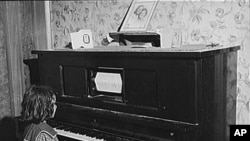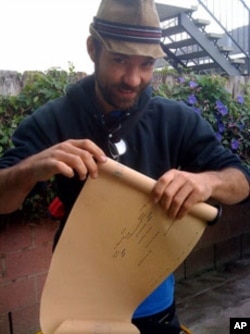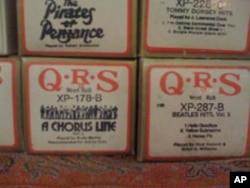Not long ago, the daily newspaper in Buffalo, New York, ran a story under the headline, The Day the Music Died. Not all music, but music of a most unusual sort.
More than a century ago, the piano was a status symbol in every respectable American parlor. It was the home entertainment center before radio and phonographic records came along. But a pianist was not always handy, so mechanical pianos, called pianolas or player pianos, took their place.
We mentioned player pianos briefly recently in a story about the musician Scott Joplin and his invention of ragtime music in Sedalia, Missouri.
As the name suggests, player pianos almost played themselves, using something called piano rolls. Even someone who knew nothing about music could pump the pedals on the instrument.
Pressure from the pedals turned rolls of stiff paper into which little perforations were punched in many as 88 locations along a line. That matches the number of keys on the piano keyboard.
The holes passed over sprockets that caused hammers inside the pianola to strike the piano wires.
And the vibrating wires produced music, much as they would in a standard piano.
Sometimes the player piano's mechanism could be rigged so that it also depressed the actual piano keys as if a ghost were sitting on the bench, playing a lively tune.
Coin-operated player pianos called nickelodeons soon appeared in bars, ice-cream parlors, and poolrooms.
Customers would select a song, drop a coin into a slot and the appropriate piano roll would play the selected song.
People built libraries of piano rolls, much as they would later amass collections of records and compact discs. But as technology advanced, piano rolls and player pianos became curiosities - musty museum pieces.
And then a 108-year-old company in Buffalo, New York, called Q-R-S, the world's last mass producer of piano rolls, stopped making them. So that was the day that at least one kind of old-fashioned music did, in fact, die.








